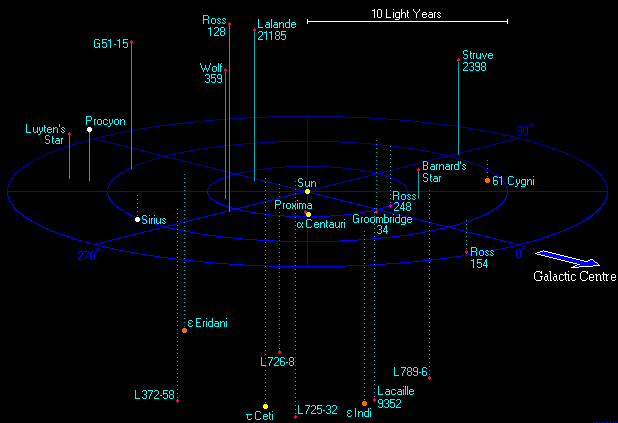Understanding the Universe
- Introduction to Cosmic Distance Ladder
- Astronomical Unit
- Standard Candles
- Cepheid Variables
- Tully-Fisher Relation
- Hubble's Law
- Cosmic Microwave Background
- Challenges and Limitations
- Course Review and Discussion
Light Year
Understanding Light Year

Unit of length used to express astronomical distances, defined as the distance that light travels in a vacuum in one year.
A light year is a unit of distance that is commonly used in astronomy. Despite its name, it is not a unit of time, but rather a measure of how far light can travel in one year. This unit is particularly useful when discussing distances on an astronomical scale, as it allows for easier comprehension of the vast distances involved.
Definition of a Light Year
A light year is defined as the distance that light can travel in one year. Given that light travels at a speed of approximately 299,792 kilometers per second (or about 186,282 miles per second), this adds up to a very large distance over the course of a year. In fact, a light year is approximately 9.461 trillion kilometers, or about 5.879 trillion miles.
The Concept of Light Speed
The speed of light is a fundamental constant of nature. It is the maximum speed at which all energy, matter, and information in the universe can travel. It is also the speed at which light waves propagate through a vacuum. This speed is incredibly fast, allowing light to travel around the Earth about 7.5 times in just one second.
The speed of light is not only important for defining a light year, but it also has significant implications for our understanding of the universe. For example, when we look at distant stars and galaxies, we are actually seeing them as they were in the past. This is because the light from these objects has taken a significant amount of time to reach us. For instance, if a star is 1,000 light years away, the light we are seeing from that star actually left the star 1,000 years ago.
How a Light Year is Used as a Unit of Distance
A light year is used as a unit of distance in astronomy because it allows for easier discussion and comprehension of the vast distances involved. For example, the nearest star to Earth (other than the Sun), Proxima Centauri, is about 4.24 light years away. This means that the light we see from Proxima Centauri today actually left the star over 4 years ago.
Similarly, our Milky Way galaxy is about 100,000 light years in diameter. This means that light from a star on one side of the galaxy would take 100,000 years to reach a star on the other side. When we start to consider distances to other galaxies, the numbers become even more mind-boggling. For instance, the Andromeda galaxy, our nearest spiral galaxy, is approximately 2.537 million light years away.
In conclusion, a light year is a crucial unit of distance in astronomy, allowing us to comprehend the vastness of the universe. By understanding what a light year is and how it is defined, we can better appreciate the scale of the cosmos and our place within it.